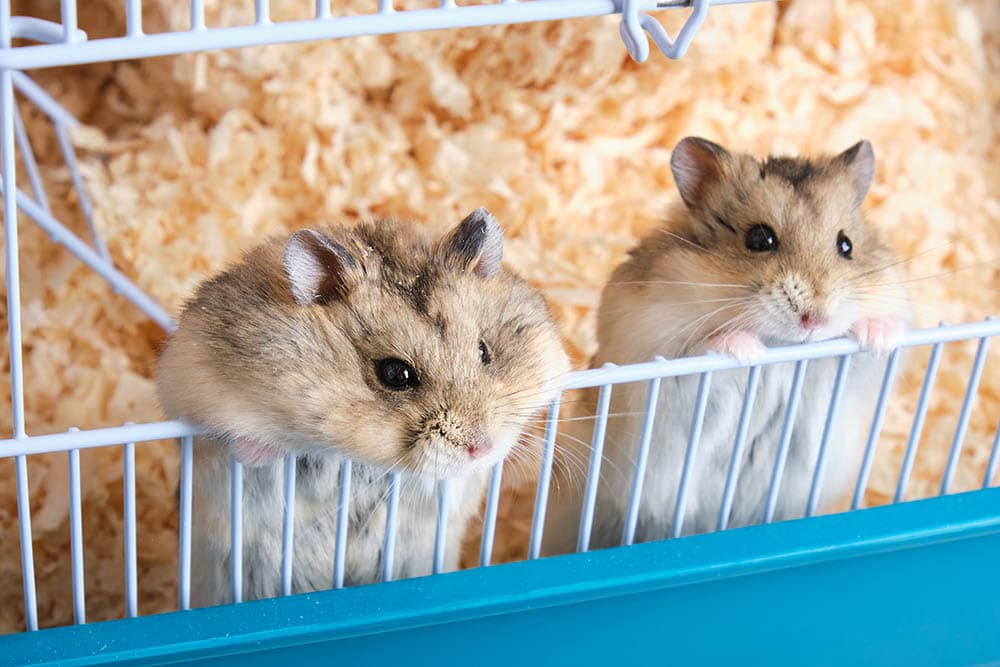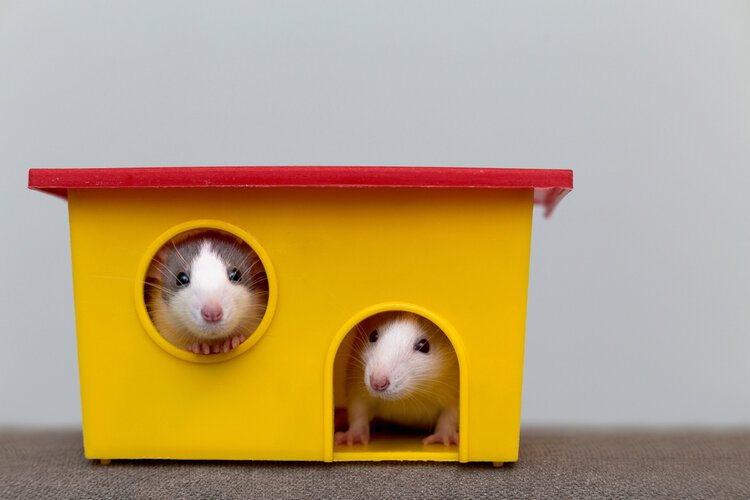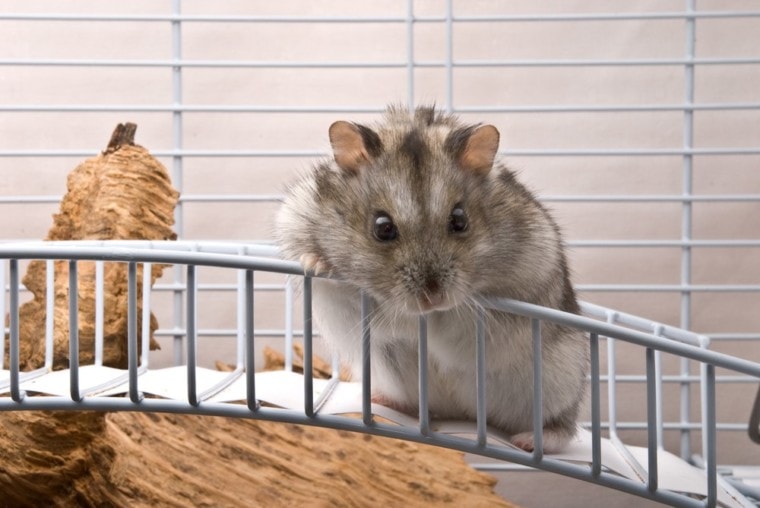
No matter what sort of pet you own, we all want our pets to be happy. Luckily, most pets are pretty easy to make “happy” with the right care and enrichment, including hamsters. While hamsters are often considered one of the easier pets to own, there is a lot that goes into their proper care.
Though hamsters cannot feel happiness in a human emotional sense, they can definitely show signs of thriving when they’re healthy and housed in an appropriate enclosure. For most owners, wanting to see their pet happy is synonymous with wanting to see them thriving and healthy.
Ensuring your hamster is well taken care of is the first step to ensuring they’re happy. Once you have the basics down, there are quite a few other things you can do as well. We’ll discuss these “extras” in this article.
If you’re looking to make your hamster a bit happier, here is a list of things you can try.

The 20 Ways to Keep Your Hamster Happy
1. Provide a Bigger Cage
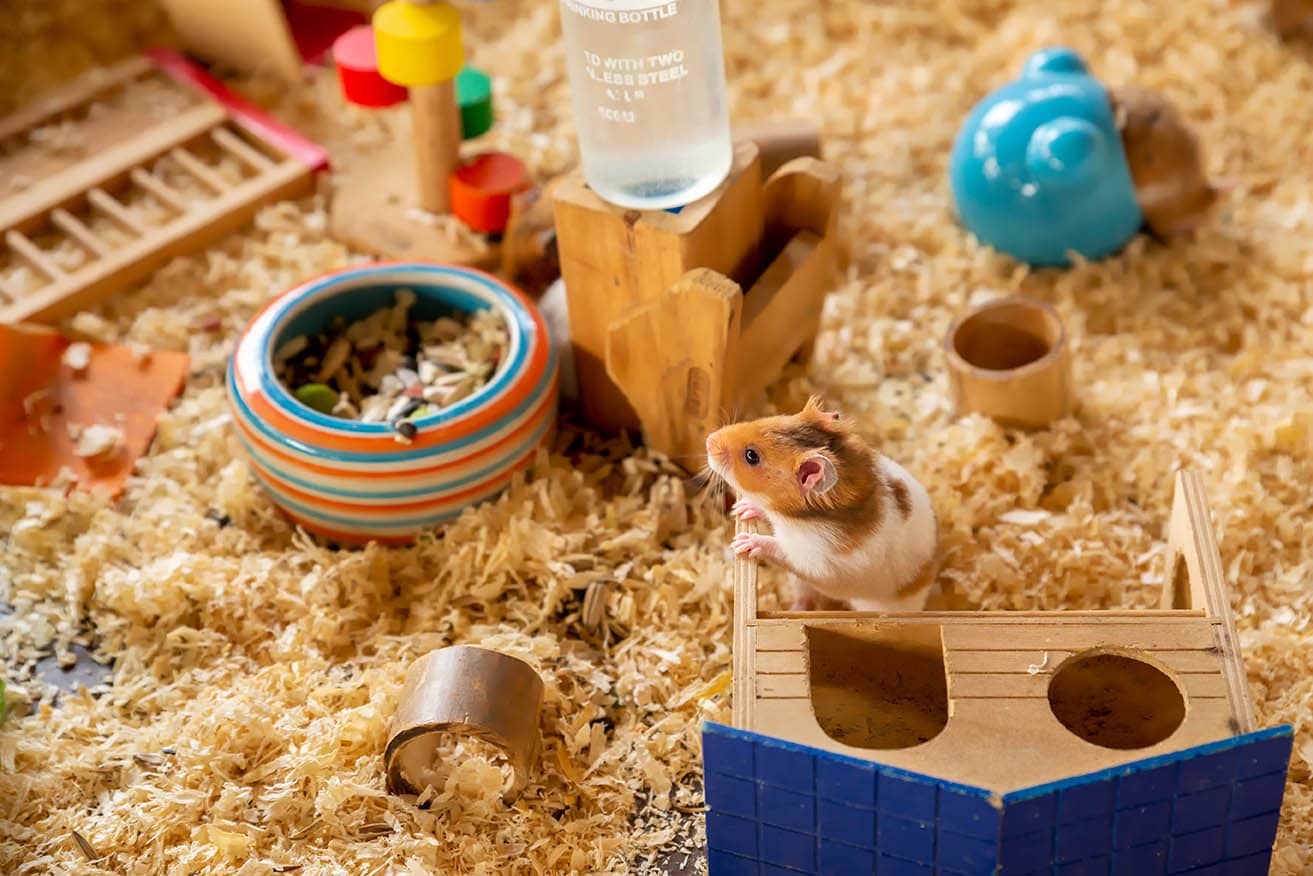
Hamsters spend most of their time in their cage, so it is important to ensure that their cage is big enough to meet their needs. Hamsters need mental enrichment and physical enrichment to stay happy and healthy. Often, a larger cage often makes it easier to accomplish these things.
In the wild, a single hamster has a lot of territory. While we won’t be giving our hamsters huge amounts of space, it does do them some good to go above the usual space requirements and give them something a little bigger. Just because a hamster is small doesn’t mean they will be pleased with a small space.
Hamsters should have plenty of space for burrowing, toys, and things to meet their physical needs. A larger space also ensures that the hamster will get enough physical exercise, which is important for them to maintain a healthy weight and stay fit.
2. Provide a Complete Diet
Often, when it comes to your hamster’s diet, you can get away with “just good enough”. There are a lot of commercial foods that your hamster can stay alive on, but that doesn’t necessarily mean that the hamster will thrive. One of the first steps to making your hamster happier is to optimize their diet. Your hamster will feel much better if he is on a suitable diet.
You shouldn’t just rely on a commercial hamster diet. Instead, add appropriate fresh foods too. This will help make your hamster happier and healthier.
With that said, more food is not always better. Hamsters often have a food stash in their burrows. They won’t just leave food in their bowl. Therefore, you can’t judge the amount of food you’re giving your hamster off of how much food they leave behind. Instead, you should check their favorite burrows to see where they’re hiding food (if any).
- See also: What Human Foods Can Hamsters Eat?
3. Fresh Water Is Always Better
You’ll be surprised by the amount of water a hamster will consume in a day. This is especially true if the cage is a bit larger, as your hamster will probably be moving around a bit more. Fresh water is absolutely essential for your hamster’s wellbeing. Without the right amount of water, your hamster won’t be happy or healthy.
It’s a common myth that hamsters come from deserts and therefore don’t need much water. While hamsters can survive for a decently long time without water, this does not leave them in a healthy place. As pets, hamsters should always have access to fresh water.
Choose a high-quality water bottle to ensure that your hamster remains hydrated at all times. Your pet should always be able to drink water when they need to.
4. Use a Safe Exercise Wheel
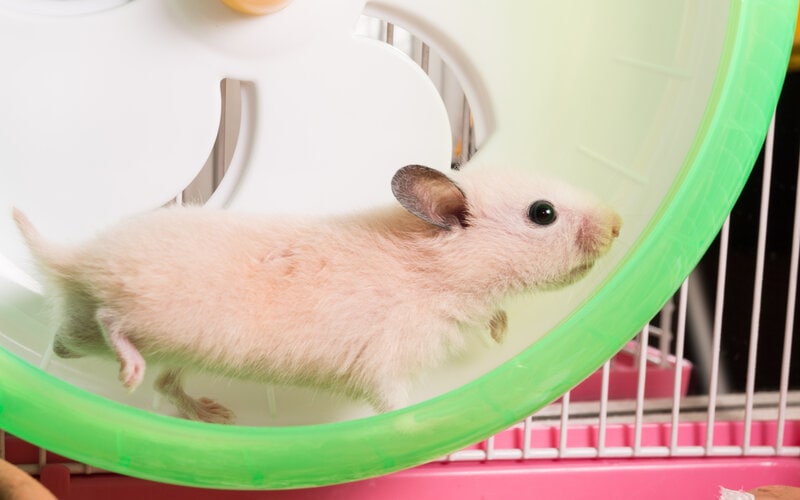
In the wild, hamsters do a lot of running. The average hamster may run up to 5 miles every night looking for food, water, and mates. As pets, they obviously can’t do this. This is one reason why an exercise wheel is absolutely necessary. Hamsters were made to run, so it is important to give them that opportunity.
Exercise wheels are not an overvalued gimmick. Instead, they are a seriously vital toy that every hamster should have. Without one, they can gain weight and become bored. There are many hamster wheels you can choose from, but the safest ones are enclosed, as opposed to the wired ones with openings. The wheel should be large enough so that your hamster’s spine doesn’t curve or bend when they use it.
Many hamsters also get injured with the open rungs. If your cage is big enough, you may even be able to have two so that your hamster will have some variety.
5. Add a Tunneling System
Hamsters are natural tunnelers. It’s what they do. If you leave a hamster alone in its cage, they will try to dig tunnels, just like they do in the wild. However, they often don’t have much room for this. And, the bedding commonly used in hamster cages just isn’t appropriate. For these reasons, their owners will often need to make the tunneling system for them.
An easy way to do this is by using commercially made plastic tunnels. However, these are quite expensive. If you’re looking for a big setup, you’ll probably spend quite a bit of money getting it done. You can also make DIY tunnels out of paper towel rolls or plastic bottles. Of course, this takes a bit more time and won’t look as pretty, but it’s a much cheaper solution.
6. Consider Treats—in Moderation
An easy way to make a hamster happy is to give them treats. Just like our favorite foods make us happy, our hamsters will enjoy their favorite foods as well. Fresh veggies and protein (for example, boiled eggs) are a great treat that is also healthy. Some veggies are healthier than others, of course, so do your research before feeding anything to your hamster. You should also consider feeding your hamster nuts and seeds, which can be equally as healthy in moderation.
The most important thing to remember is to provide your hamster with treats in moderation. You don’t want them trying to live off of treats. They need to consume plenty of their usual food as well.
7. Provide Deep Bedding
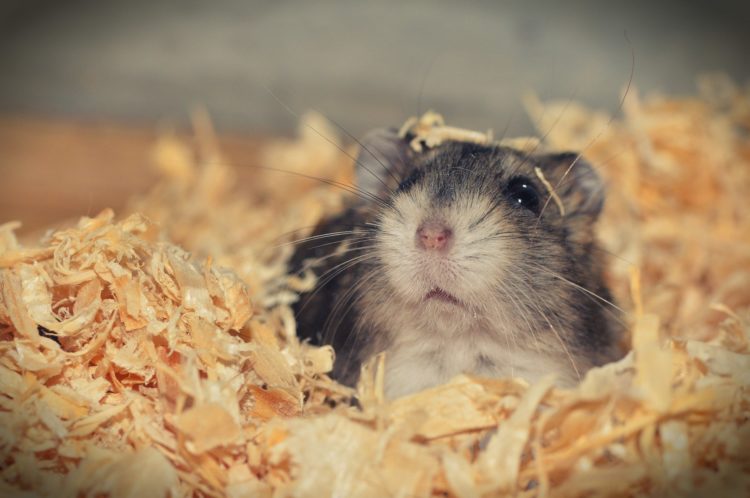
As we previously discussed, hamsters love to burrow. This is often where they will sleep and hide their leftover food. Hamsters feel the safest when they are inside a burrow, so it is essential to provide them with plenty of room to burrow. This means making their bedding deeper than you might otherwise. Hamsters need little vertical room since they’re so short. You can take advantage of this by providing them with a lot of bedding. Hamsters do best when their bedding is at least 40 centimeters (around 15 inches) deep, and enjoy bedding even deeper than that.
8. Enrichment Is Essential
Enrichment is important for hamsters. It is a need, not just something extra for you to do. Just like hamsters need food and water, they also need to stretch their brains. An easy way to provide plenty of enrichment is to use toys. In fact, we recommend switching out toys often so that there is always something new for your hamster to try.
Just like children, hamsters may get bored with the same toy over and over again. However, if you switch toys out, something they played with months ago will suddenly become new again. It’s an easy way to keep your hamster’s life interesting.
9. Make Their Cage Feel Natural
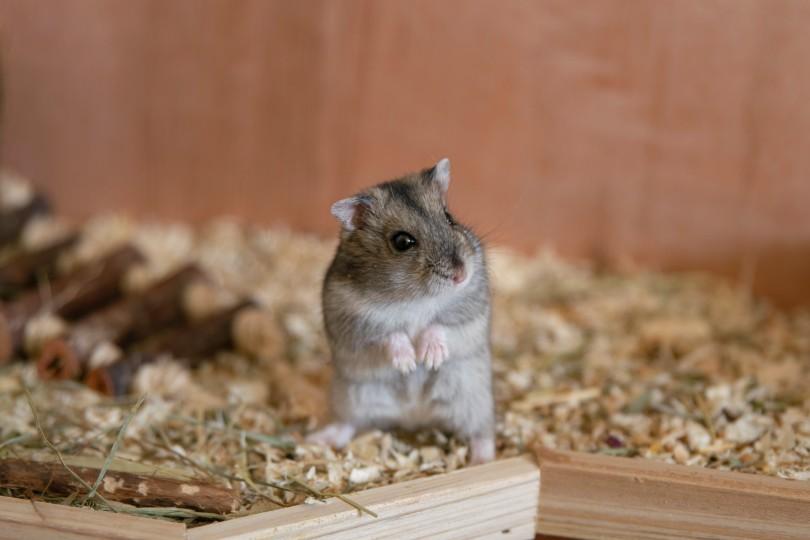
When it comes to making hamsters happy, you should aim to make their environment as natural as possible. Usually, trouble starts when the hamster’s environment is too different from the one they’re evolved to deal with. Feel free to bring in natural elements that your hamster may encounter if they were wild.
Before you add anything to the cage, do make sure that it is safe for your hamster. You don’t want to add anything with pesticides or other chemicals.
10. Don’t Clean Too Often!
This may seem a bit counterintuitive, but you don’t want to clean your hamster’s cage too often. Every time you clean your hamster’s cage, you’re going to be removing their burrows and likely stressing them out. Hamsters do have sensitive noses, so you’ll want to keep their catch decently clean. However, you should spot clean as much as possible. There is no reason to completely redo the whole bedding when a spot cleaning would work instead.
It is preferable for you to teach your hamster to use a litter box, which will make cleaning much easier. You’ll be able to clean the litter box without disturbing the rest of your hamster’s habitat, which can lower their stress considerably.
11. Show Them Affection (But Not Too Much)
Humans tend to be very touchy-feely. They want to hug and love their animals. It’s completely natural for us – but it can be considerably less natural for our hamsters. Some hamsters like to be petted. If this describes your hamster, then, by all means, pet them!
However, other hamsters are a bit less-than-thrilled about human hands and prefer not to be touched. There is no reason to stress your hamster out more than normal, so we recommend not petting them very much in this situation. Most hamsters are solitary in the wild, so this isn’t as rare as you’d think. Most hamsters are not very touchy or affectionate.
12. Don’t Get Your Hamster a Friend
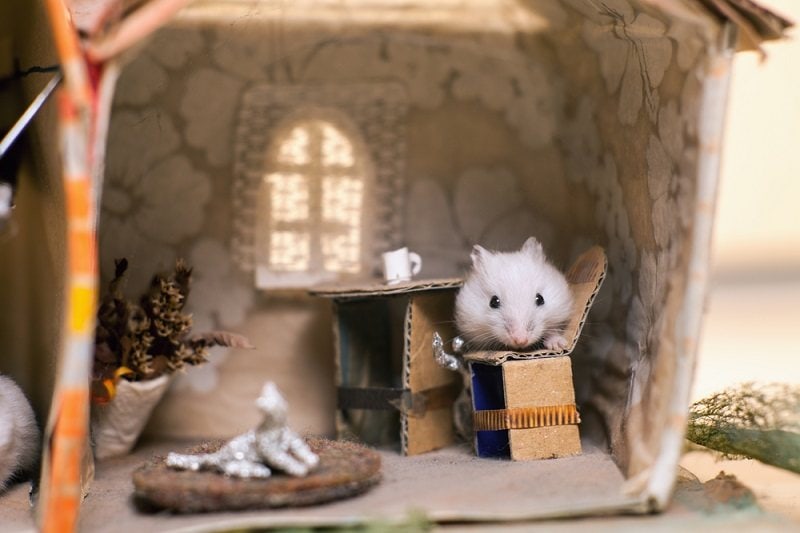
It is a common misconception that hamsters need a friend to be fulfilled. Truthfully, though, most hamsters are solitary animals. In the wild, they do not live with other hamsters, and they don’t need to be kept with other hamsters as pets either. Most hamsters prefer to live alone, though there are some species that will tolerate other hamsters in their area.
In many cases, hamsters are likely to fight until one is killed or gets rehomed. Therefore, you should never keep your hamsters together unless they are a particular species that is okay with other hamsters.
If you want to get more than one hamster, you will need to keep them in their separate cage. This includes keeping everything separate and sanitizing anything that is used in both cages. The scent of the other hamster can stress them out, so you want everything to be as scent-free as possible (including you).
13. Let Them Hide
Hamsters make burrows so that they can hide from predators and the hot desert sun. In most cases, they feel most comfortable when they are hiding. When they feel threatened, most hamsters will retreat to their hiding places. Problems can arise if they feel the need to hide, but cannot find a suitable hiding place to run to.
There should be several hiding places throughout your hamster’s cage. Often, they will dig and make their own, though pre-made structures are still a good idea. They don’t get destroyed when you clean the tank and provide a consistent hiding place for your hamster.
When your hamster decides to hide, it is equally important that you let them. You are not making them less shy or showing them that everything is okay by handling them when they are scared. Let them calm down before you take them out of their tank.
14. Provide Opportunities to Chew

Like most rodents, a hamster’s teeth grow continuously. Because of this, they need to chew constantly to wear their teeth down. If their teeth are not worn down properly, they can cause all sorts of problems.
Luckily, chewing is second nature to hamsters. You just have to give them opportunities to do it. There are several chews available on the market that hamsters can use to wear their teeth down. Be sure your hamster has access to a couple of these at all times so that they can naturally control their teeth growth, as they would do in the wild.
15. Put the Cage in a Suitable Spot
You shouldn’t just put your hamster’s cage anywhere. Hamsters are a bit sensitive to things like noise and temperature fluctuations. You don’t want to put your hamster near a TV or another noisy piece of equipment, as they will likely become scared more often than not.
You also don’t want to put them in a drafty area. While drafts usually don’t affect us very much, hamsters are very small. When a cold draft comes their way, they can get cold very quickly. For this reason, don’t put them near an outside door or a leaky window. They prefer a nice, quiet corner where they can feel safe and warm.
16. Only Use Safe Accessories
Many hamster injuries are caused by using improper accessories in your hamster’s cage. Just because something looks safe doesn’t necessarily mean that it is. Everything needs to be sanitized and cleaned before it is safe for your hamster.
While using pieces of wood you found outside as accessories can create a natural environment, they can potentially be contaminated with bacteria or harmful pesticides. This can potentially make your hamster sick, which is not something that would make them happy in the least.
For this reason, you should be sure to sanitize and clean anything before you put it in your hamster’s cage. This includes commercial toys since you don’t know what they’ve come into contact with.
17. Do Note Get a Hamster Ball
Contrary to popular belief, hamster balls are not good for hamsters. Hamsters easily become disoriented in them, and they are quite restrictive in terms of their air flow. A hamster also cannot willingly stop the ball, as it has no brakes. Therefore, they often slam into objects when inside a ball, further increasing the risk of injury. They are considered counterintuitive to animal welfare 1.
18. Give Them a Sand Bath

Hamsters love taking sand baths. While it does actually make the hamster cleaner by removing excess oils from their skin and fur, the simple act of taking a sand bath can make any hamster happy.
Be sure to use sand that is safe for hamsters, and get an appropriate bowl that isn’t going to tip over. The last thing you need is sand and a sandy hamster spilling out all over the floor.
19. Let Them Sleep When They Want To
Hamsters are classified as nocturnal, though some species are mentioned to be potentially crepuscular. All hamsters will sleep during the day. Instead of interacting with them during the day, you should aim to interact with them at night as much as possible. Some owners will try and switch their hamster’s sleeping hours, but this isn’t really possible without damaging the health and happiness of the animal.
We highly recommend allowing the hamster to sleep as much as they want during the day. Clean their tank and play with them in the evening or early morning hours before they’ve gone to sleep.
- You may also be interested in: How To Give a Hamster a Bath In 7 Steps
20. See Veterinary Input
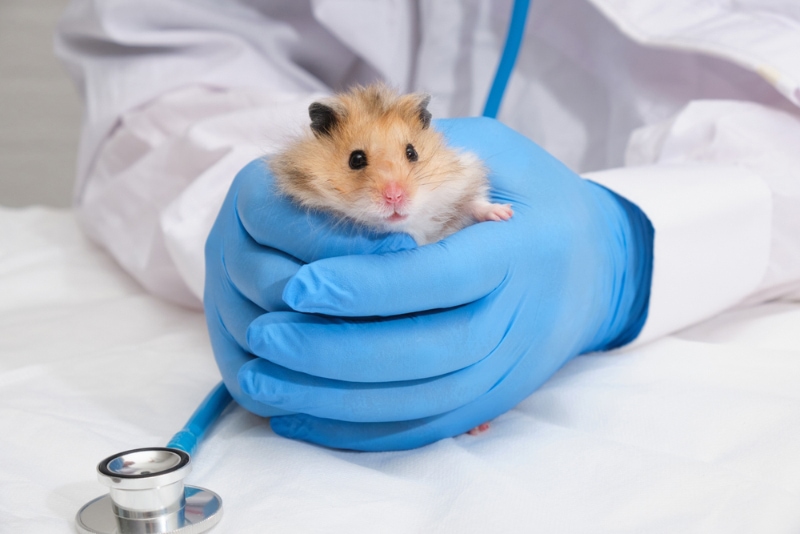
A veterinarian’s input is necessary for your pet hamster throughout their life but is especially important anytime you feel as if your hamster appears unwell or is not acting like their usual self. Like many animals, hamsters try to mask their illnesses whenever possible, so ensuring they are seen by a vet regularly can help catch potential issues early on. This offers your pet the best chance at making a successful recovery.

Conclusion
Though the concept of happiness and emotions in general isn’t well understood in rodents, there are, nonetheless, many things you can do as an owner to ensure that your pet is healthy and thriving. In turn, the sight of a pet living their best life will indeed bring joy and happiness to yours as well!
- You may also be interested in: How To Give a Hamster a Bath In 7 Steps
Featured Image Credit: Hintau Aliaksei, Shutterstock

